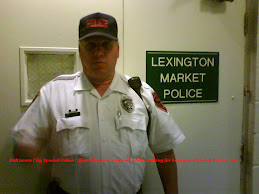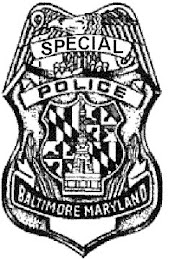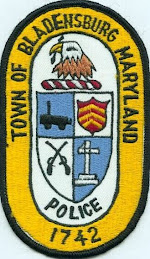 Sgt. Clark Pennington, Training Supervisor for the Frederick Police Department, foreground, gives the field sobriety test to Ofc. Robert Brown, a volunteer intoxicated person whose blood alcohol content is .16 percent, during the Citizen Police Academy recently.
Sgt. Clark Pennington, Training Supervisor for the Frederick Police Department, foreground, gives the field sobriety test to Ofc. Robert Brown, a volunteer intoxicated person whose blood alcohol content is .16 percent, during the Citizen Police Academy recently.FPD tests sobriety with citizen academy [video]Originally published October 05, 2007By Sarah Fortney News-Post Staff
Photo by Skip Lawrence
DETAILS
Nationwide, on a typical Friday or Saturday night, one out of seven people leaving a bar is drunk enough to be charged with DWI.
Prior to 1994, almost half of the drivers who died in crashes had been drinking.
In 1998, alcohol contributed to 38.5 percent of all fatal crashes.
The average DWI violator drives while intoxicated 80 times per year.
Alcohol-related crashes cost taxpayers $46 billion on lost productivity, medical expenses and property damage.
Source: Frederick Police Department.
— — —
In Pursuit
Police reporter Sarah Fortney blogs on what’s happening on the public safety/fire/police scene. Click here to read her blog.
Local police briefed several people on the importance and accuracy of field sobriety tests during the Frederick Police Department's Citizens Police Academy on Wednesday.
Then, three intoxicated people came to class and let those briefed decide whether they should pass or fail the three-part Standard Field Sobriety Test.
About 20 people are enrolled in the 10-week course that meets at the Charles V. Main Training Facility on Plant Road. The academy gives an in-depth look at police work and the department.
Officer Robert Brown, a 17-year veteran, has seen his share of drunk drivers. He volunteered to let the class put him through the sobriety test after he drank about 12 beers in two hours.
The class agreed Brown would have failed the test had he been behind the wheel.
Brown had a blood alcohol content of 0.17 when he arrived about 8 p.m. An hour later, it dropped to 0.13.
In Maryland, an ABC level of .07 is enough for a conviction of driving while impaired. An ABC of 0.08 or more warrants a charge of driving under the influence.
Drivers charged with driving while impaired face fines of as much as $500 and/or one year in jail and eight points on their driving record; those charged with driving under the influence face fines of as much as $2,000 and/or two years in jail and 12 points on their driving record.
The other volunteers who came to the class also had ABC levels above 0.1. Altogether, they drank about 20 beers and eight martinis at Hard Times Cafe. A designated driver brought them to the class.
Sgt. Clark Pennington and Cpl. Matt Evans helped the class test the three intoxicated people. They suggested looking for clues, as police would, to identify a person's level of intoxication.
Involuntary eye jerking, known as nystagmus, is one sign.
"The eyes don't lie," Brown said.
No matter how hard intoxicated people try to look sober, they cannot control their eye movement.
The next part of the test requires a person to walk nine steps forward, heel-to-toe, along an invisible line, counting each step out loud with arms to the side. The person should be able to keep a steady balance, take all nine steps without stopping and not stumble out-of-line.
During the one-leg stand, the person must raise either leg about 6 inches above the ground, keeping eyes on the elevated foot. For 30 seconds, the person should count out loud, "One, one thousand, two, two thousand," and so on, until the officer says stop.
Police can choose to ask the person to take the Breathalyzer test to measure blood alcohol content, which can confirm the officer's judgment and help establish probable cause to make an arrest.
Deciding to make an impaired driving arrest is based on the evidence the officer gathers from the beginning of the traffic stop.
In addition to the lesson on impaired driving, police also talked to the class about the Special Response Team.
Sgt. Pat Grossman, SRT supervisor, told the class about 15 members make up the team. They are on-call around the clock.
The team goes through additional training and is used in high-risk situations, such as when people barricade themselves inside a home.
Next week, the class will watch a police dog demonstration and learn about the Special Operations and Community Services divisions.














































No comments:
Post a Comment